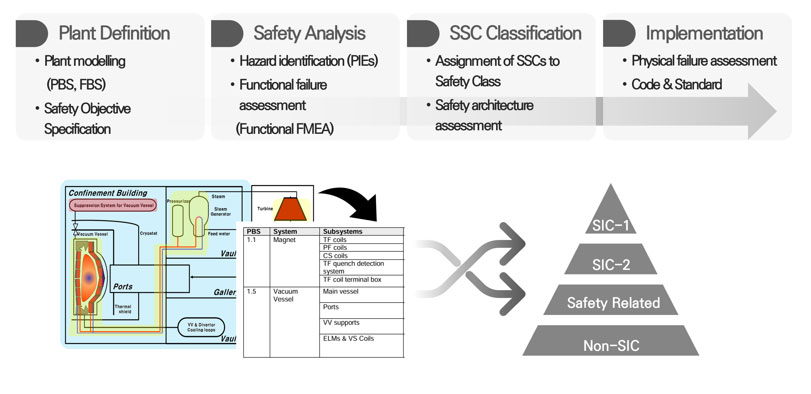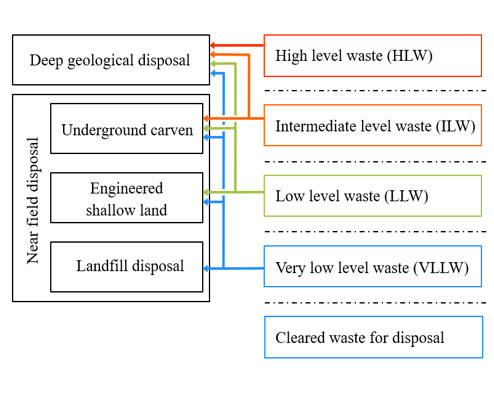Seoul National University of Science and Technology
Seoul National University of Science and Technology
Nuclear fusion is the process in which two light atomic nuclei combine to form a heavier one, releasing energy in the process.
To initiate nuclear fusion, the nuclei must collide at extremely high temperatures. In other words, it is crucial to confine a high-temperature plasma.
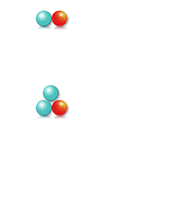
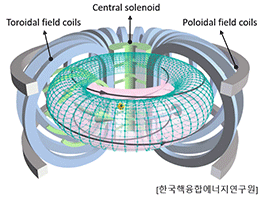
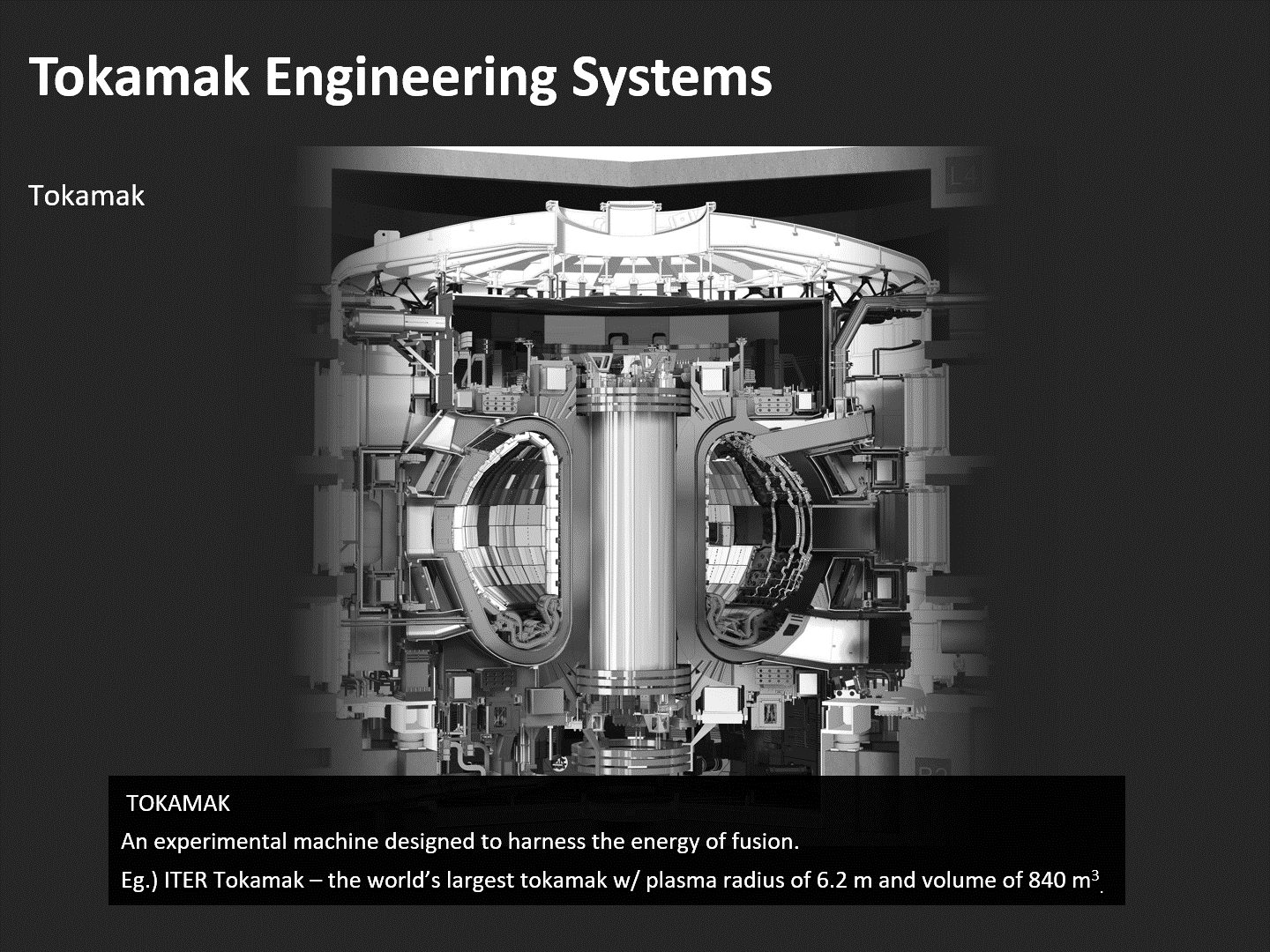
An experimental machine designed to harness the energy of fusion.
Eg.) ITER Tokamak – the world’s largest tokamak w/ plasma radius of 6.2 m and
volume of 840 m3.
Tokamak engineering system consist of 1) vacuum vessel, 2) magnets,
3) cryostal, 4) blanket, 5) divertor, etc.
There are many engineerign issues, related of heat transfer,
on tokamak engineering system.
Breeding blankets are crucial components for fusion reactors, transforming fusion energy into thermal energy.
The primary load on these blankets results from the 14.1 MeV neutron energy generated by the D-T reaction.
Our group investigate the radioactivity level of nuclides, nucelar heat depostion and decay heat of conceptual water-cooled ceramic breeder blanket
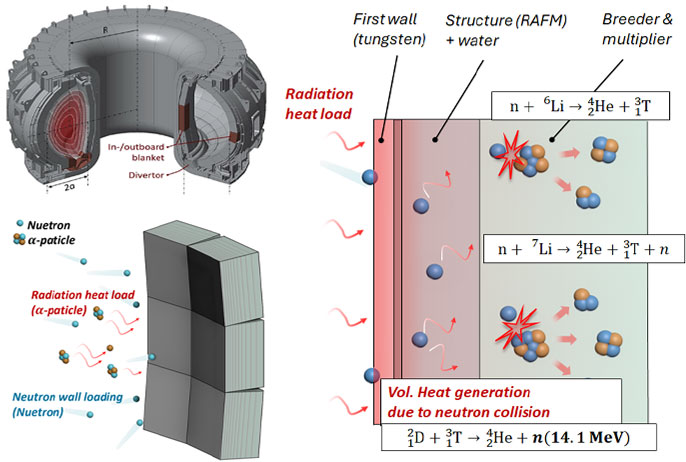
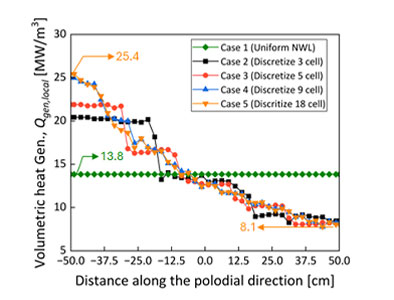
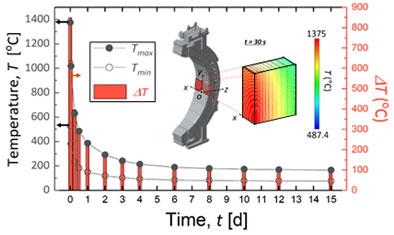

To settle fusion technology, technical- and engineering challenges should be solved to control unstable fusion plasma.
In-vessel control coil (IVCC) in Korea Superconducting Tokamak Advanced Research (KSTAR) has been implemented for plasma control.
We characterize the thermo-mechanical behaviors of IVCC under high heat-generation environments due to electrically induced eddy currents.
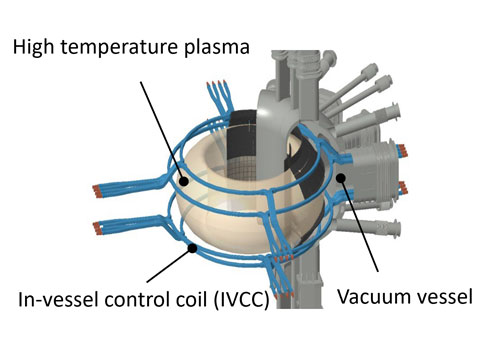
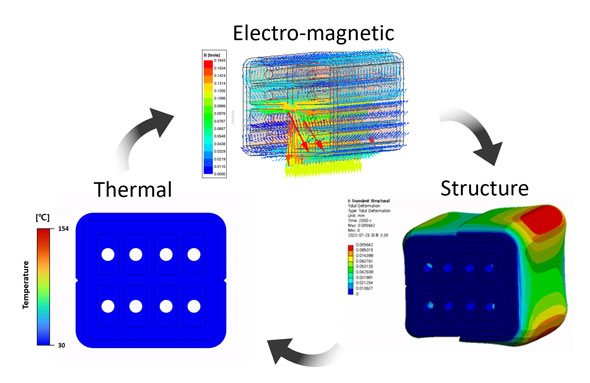
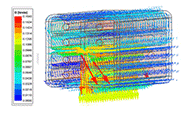

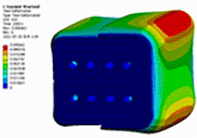
Our group is focused on the safety assessment of the K-DEMO. We study key factors such as internal energy sources, radioactive waste,
and tritium management in relation to current Korean regulations. By analyzing challenges from past projects like KSTAR and ITER,
we aim to contribute to a regulatory framework that ensures both technical safety and social acceptance for fusion technology.
